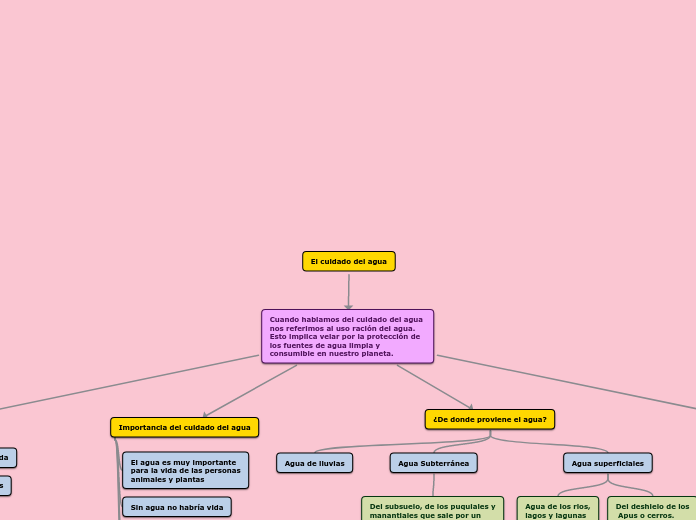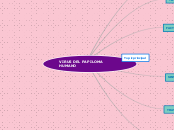Química de los Alimentos
To name your story, you have to think about the overall message and what you want your audience to understand from the story. Also, make it relevant and easy to remember.
ALIMENTOS HIDROPÓNICOS
No depende de las condiciones climáticas
Mayor calidad del producto
Automotización
No hay utilización de tierra
BASES
William Gerick fue quien sentó las bases
HIDROPONIA
Es aquel que no prescinde de tierra, y en su lugar se utiliza un material inerte para dar soporte al cultivo, como la fibra de coco, la lana de roca y la vermiculita
ALIMENTOS TRANSGENICOS
GENERACIONES
3 Generación
Obtener beneficios a nivel industrial
2 Generación
Mejorar las variedades nutricionales
1 Generación
Resistencia a plagas
CARACTERÍSTCAS
Mayor tolerancia a plagas
Mejor calidad
Mejor comportamiento agronómico
TRANSGENICO
Aquellos que han sido sometidos a una manipulación genética para obtener una característica deseada
ALIMENTOS ORGÁNICOS
The ending of a story is essential. We all know that if the ending is weak, what happened before loses its importance. So make it unpredictable, but fair. A resolved ending answers all the questions and ties up any loose threads from the plot.
CLASIFICACIÓN (FDA)
Productos con menos del 50%
Hecho con productos orgánicos
Orgánicos
100 % orgánicos
DESVENTAJAS
Mayor costo
VENTAJAS
This is the closure section of the story.
See examples of possible outcomes below:
- all problems have been solved
- it's clear how each one of your characters ends up
- your main character is transformed by the challenge
Biodiversidad
Valor nutritivo
Disminución de nitratos en vegetales
Try answering these questions in order for you to come up with a closure:
- Have all problems been solved?
- Is it clear what happens with all your characters in the story?
- Has the challenged transformed your main character?
- How do the characters feel in the end?
Reminerilización
Disminución en el impacto ambiental
Try answering these questions to come up with a closure:
- Have all the problems been solved?
- Is there a clear picture of what happens with each character in the story?
- Has the challenge transformed your main character?
- How do the characters feel in the end?
ORGÁNICO
This is the moment when the main character surpasses the last obstacle and finally faces their greatest challenge.
The climax usually follows one of these patterns:
- realization
- resolution
- choice
Type in your answer.
¿A que se refiere?
Aquellos en cuya producción no se utilizan insumos sintéticos como fertilizantes, plaguicidas, hormonas, conservadores, anabólicos y antibióticos, ni OGM (transgénicos) o aguas contaminadas
ALIMENTOS FUNCIONALES
The middle of the story is where you add layers of complications that will lead to the end. Reveal more about the character's journey. Did their personality go through changes? How did they overcome the challenges? And as you build up the story’s central conflict, make it more personal to that character. Also, from the middle act, you have to lead into the final act.
BENEFICIOS
Defensa antioxidante
Abundantes en Vitamina E,C; carotenos y con alta actividad atioxidante
Crecimiento y desarrollo
Embarazadas, niños y bebes
Funciones psicológicas
Tranquilizante
Cardiovascular
Fitoesroles, ácidos poliinsaturados y fibra
Digestivo
Mejorar la digestión del organismo debido a un compuesto que no es digerible (Ej, probiótico y prebiótico)
Metabolismo
Reducir enfermedades y obtener un mejor rendimiento
ORIGEN
There wouldn't be any tension and excitement in your story if there weren't any obstacles in your character's way.
Minorus Shirota inició la investigación (Yakult)
¿Qué factores lo provocaron?
A story is nothing more than a character overcoming a series of difficulties to reach the desired goal. Obstacles usually create suspense and conflict. In overcoming obstacles, there is growth: weak becomes strong; hatred turns into love; sadness into happiness; wrong into right; lies into truth; or evil becomes good.
See a few examples below:
- stopping a meteor
- finding a killer
- finding love
Prevención y reducción de enfermedades
Envejecimiento de la población
Incremento de alergías
FUNCIONAL
Son productos elaborados por la adición de nutracéuticos y fitoquímicos, o por la eliminación de algún compuesto dañino
ANÁLISIS
Your character(s) need(s) motivation in order to solve the challenge(s).
Conocer los componentes
Secondary characters might also have motives that lead them to cross paths with the main character or which might trigger them to help the main character.
Son susceptibles de sufrir contaminación
Why does your character need to confront this challenge? What does he/she expect to accomplish by solving it?
See a few examples:
- will marry in 3 days
- can fix the mistakes of the past
ALIMENTO
Each story has a main character and that character usually needs to solve a problem or challenge. The character's challenge is the one that creates tension throughout the story.
¿Qué es un alimento?
In most stories, there are 3 challenges. The number 3 is a mystical number symbolizing completeness. Try to come up with interesting challenges with which your character needs to struggle.
See a few examples below:
- turns into a werewolf at night
- is sent back in time
Sustancia o producto de cualquier naturaleza que aporta energía o nutrientes
HISTORIA
In the beginning of the story (or the exposition), you will need to introduce the setting and characters. You might also want to introduce the main conflict. This part of the story is important because it gives the reader necessary background information and maybe even a first insight into a character’s personality.
Louis Pasteur
Demostró que la descomposición es debida a microorganismos
Nicolás Arpert
Fue el primero en demostrar la conservación hermética para alimentos
Justus von Liebig
Clasificó a las grasas, proteínas e hidratos de carbono
Théodoro de Saussure
Estudió sobre la transformación del almidón en glucosa
Gay-Lussac
Diseño un procedimiento para determinar Carbono, hidrógeno y nitrógeno
Carl William Scheele
The setting (time & place) of a story can change throughout the plot.
Farmacéutico sueco
Sensory details include sight, sound, touch, smell, and taste. These details are important because they create depth in your setting.
See a few examples below:
- the smell of fresh bread
- the scent of freshly cut grass
- rain falling onto the windshield etc.
Determinó el ácido cítrico y málico en frutas
Descubrió como conservar y preservar el vinagre
Antoine Lavoisier
Characters are essential to a good story. Usually, the protagonist(s) is/are the most affected by the plot. Introduce a character by focusing on their actions, interests, and occupation, as the physical appearance doesn't make a difference in most cases.
Descartó la teoría del flogisto
Type in the name of your character.
Explicó la fermentación como proceso matemático
Which traits best describe the character's personality? Choose more if necessary:
introvertedloyalkindindependentquick-thinkingadventuresomeidealisticsweet-naturedcalmrisk-takercreativewittystrictfussyweirdclumsyharshaggressivecarelessclingingcowardlycrueldeceitfulimpulsiveOther
Estableció los principios de la combustión de compuestos orgánicos
Choose the type of your chacter:
Protagonist (main character)Antagonist (main character's opponent)Flat (stereotypical character)Round (his/ her personality develops throughout the story)Static (doesn't evolve as a person throughout the story)Dynamic (dramatical change in personality)Confidant (the main character trusts him/ her)Foil (contrasting character who enhances the personality of another character)Other










